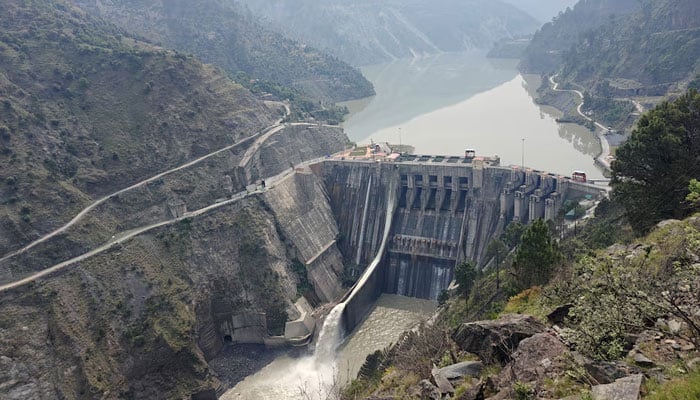
The Permanent Court of Arbitration (PCA) in The Hague has issued an emblematic judgment on the illegal participation of India in the Treaty of the Water of the Indo (IWT).
According to the last sentence, the Court of Arbitration considers that it has a “continuous responsibility to advance in its procedures in a timely, fair and efficient manner without taking into account the position of India on the suspense, and that the lack of doing so would be inconsistent with its obligations under the treaty.” The sentence is a sharp rebuke to the unilateralism of India, which has violated international law with impunity, under the assumption that its geopolitical position would protect it from international censorship.
The suspension of the IWT India is a consequence of a foreign policy promoted by high quality and ideological misanthropy, which makes it unable to evaluate the negative consequences of its warming and contempt for international law. The IWT is a robust river exchange mechanism that has suffered even through past wars between the two countries. However, since the ideologically obsessed government with BJP came to power in India, has constantly tried to undermine the international legal framework that supports peace and stability in the region.
Stock tactics in Commerce of India, such as false flag operations and the rejection of IWT commitments, represent a clear and present danger for regional peace. The flows of the Pakistan river, together with the desertification resulting from its agricultural lands, has been a recurrent issue in the anti-Pakistan rhetoric of the BJP government.
The combination of terrorism with the denial of the river has led to incendiary statements such as “blood and water cannot flow together” by Prime Minister Modi. This statement serves as a true plan for the aggression of Indian water against a lower riverside state.
In the search for the previous objective, India has embarked on a strategy to drown the water flow of the three Western rivers assigned to Pakistan under the IWT. To achieve this end, it has launched a campaign addressed to the three Western rivers, especially the Chenab River, in which India plans to build 60 dams.
India does not have much influence on the Indo River, since most of its participation in the water comes from tributaries located within Pakistan. Chenab, however, is the most vulnerable river, since it originates and passes through Himachal Pradesh and Jammu, where India has the space to build dams.
The IWT allows India to use Western rivers (up to 3.6 million water storage acres) for non-consumptive purposes, such as agriculture, alcohol consumption and energy generation. Until now, India has not completely used the MAF 3.6 storage allocation and has a 360MW energy generation capacity. However, it plans to improve this capacity at 12,000MW. There are also controversial projects, such as the Ranbir Pre-speaker channel, whose duration and capacity doubles at 120 kilometers, allowing it to attract 150 cubic meters of water per second near Akhnur.
The dams in the Chenab pose fears of the Indian manipulation of the assigned water of Pakistan under the IWT. Already, during the inclination season, the flow of the Chenab River is reduced by 7% to 10%, and Pakistan estimates that once all the upstream in the Chenab become operational, India could reduce the flow of rivers by 10% to 15%.
The main point of conflict between Pakistan and India are the design characteristics related to the storage capacity of these hydroelectric projects. India argues that you need design changes to allow rinse of reservoir sediments to prolong your operational life. However, Pakistan argues that such changes must strictly adjust to Annex D [Paragraph 8 to Article 2(d)] of the IWT, which describes the permissible design characteristics for execution hydroelectric projects.
These parameters refer to the location of water inlets below the level of dead storage, the placement of the lower part of the doors in the case of closed versions and the intake of turbines at the highest possible level, to ensure that the storage capacity does not exceed the permissible limits. According to the IWT, India must inform Pakistan about any proposed river project that runs six months in advance. India is now trying to get out of this commitment.
In addition to the insistence of Pakistan to refer disputes to the Arbitration Court and the neutral expert in the cases of Ratle and Kishanganga, India has cited four “fundamental and unforeseen” reasons: climate change, demographic changes, a commitment to clean energy and terrorism: for maintaining the IWT in the suspension. However, it is not honoring its obligations for environmental or ecological preservation, as evidenced by the destruction of 70 coniferous forest acres for the rats project.
India violates article 12 of the IWT, which establishes that the treaty can only be ended through a new mutually ratified agreement between the two countries. It is also breaking the Vienna Convention on the Treaty Law (VCLT), which stipulates that a treaty can only be suspended in accordance with its own provisions (article 57), or if a part is in “material violation” of the treaty. India either has the legal position to suspend the treaty or any evidence to demonstrate that Pakistan has committed a material violation.
Pakistan has won the first round in the legal battle with the PCA ruling, and the next step should be to seek a legal opinion of the International Court of Justice (ICI), either through the World Bank or the UN General Assembly.
The revocation of the India of the treaty threatens to establish a dangerous precedent for global cross conflicts, endangering many other conventions and agreements to share water. Worldwide, 153 countries share 286 cross -border rivers and 592 aquifer basins.
The IWT has long been an exemplary model of exchange of cross -border rivers, something that the world needs more and more amid the growing water scarcity and the revocation of India raises an existential threat to regional and global transfrontal cooperation.
Discharge of responsibility: The views expressed in this piece are that of writer and do not necessarily reflect the editorial policy of PakGazette.TV.
The writer is security and defense analyst. You can contact: [email protected]
Originally published in the news



